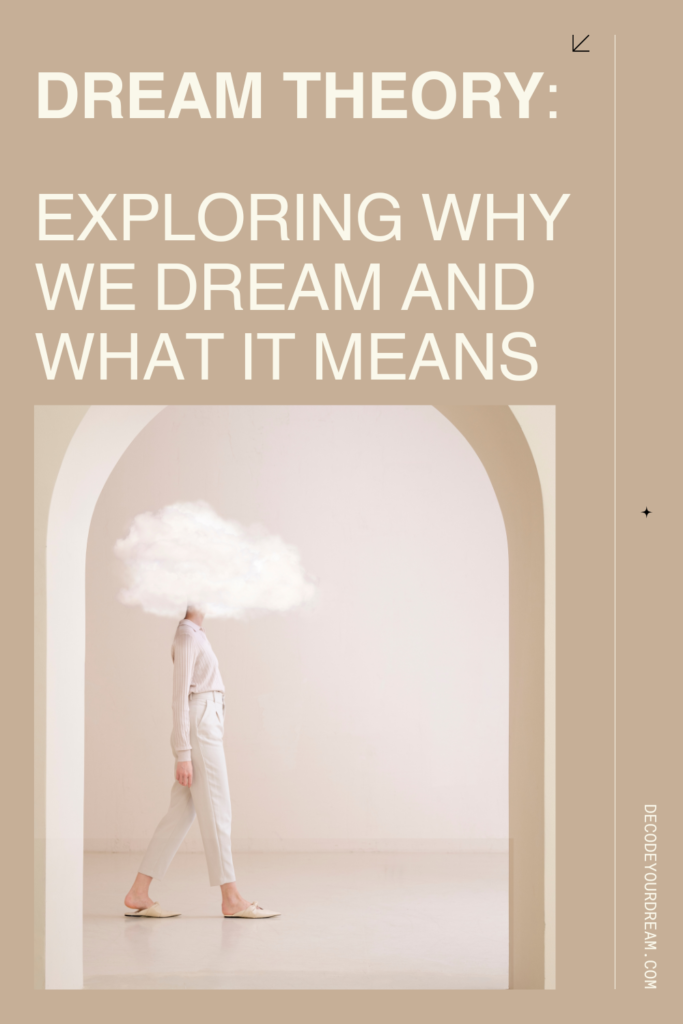Dreams have fascinated humans for centuries. From ancient civilisations viewing them as messages from the divine, to modern psychologists decoding their symbolic meanings, dream theory has evolved into a rich field of study.
But why do we dream? And what can our dreams tell us about our waking lives?
In this article, we’ll discuss some of the top dream theories, their meanings, and how they can help you better understand your subconscious mind.
The term ‘dream theory’ refers to the various psychological, neurological, and philosophical explanations for why we dream. These theories aim to explain the function, origin, and meaning of dreams, offering insights into our minds, emotions, and behaviours.
Founder: Sigmund Freud
Main Idea: Dreams are expressions of repressed desires and unconscious conflicts.
Freud believed dreams reveal hidden emotions and taboo thoughts, often disguised in symbolic imagery. For example, dreaming about climbing stairs might symbolise ambition or sexual desire.
Key Concepts:
- Manifest content: The actual storyline of the dream.
- Latent content: The hidden, symbolic meaning behind the dream.
Founder: Carl Jung
Main Idea: Dreams reflect the unconscious mind and the collective unconscious.
Jung believed dreams connect us to universal symbols (archetypes) shared across humanity. These include the shadow (dark side), the self, the hero, and the anima/animus (feminine/masculine traits within us).
Jungian dream analysis focuses on self-awareness and spiritual growth, helping people understand personal and collective patterns.
Founders: J. Allan Hobson and Robert McCarley (1977)
Main Idea: Dreams are the brain’s attempt to make sense of random neural activity during REM sleep.
This theory suggests that dreams don’t actually hold any symbolic meaning. Instead, they are a result of the brain creating a narrative from chaotic signals.
While it’s a more scientific approach, some argue that even random activity can reveal how we think, feel, or solve problems.
Founder: Antti Revonsuo
Main Idea: Dreams evolved as a biological defense mechanism, allowing us to rehearse threats.
This evolutionary theory claims that nightmares or stressful dreams prepare us to deal with dangers in real life—like being chased, attacked, or falling.
It explains why so many people have similar dream themes (e.g., falling, running from danger, being unprepared).
Main Idea: Dreams help the brain process emotions, memories, and solve problems.
This theory proposes that dreaming is part of mental housekeeping, i.e. organising new information and integrating it with existing knowledge.
Ever had a dream that helped you figure something out or put things in perspective? That’s information-processing theory in action.
No. Some view dreams as meaningful (Freud, Jung), while others see them as random or functional (activation-synthesis, threat simulation).
At the moment, no. Dream research is in its infancy stages and no one can yet agree on what is absolutely correct. Different theories may also apply to different types of dreams or individuals.
Yes, certainly! Many people find meaning in analysing their dreams, especially through symbolism, emotions, and recurring themes.
PIN THIS!


[…] are some of the most insightful and essential books about dreams. Each delves into dream theories and offers a unique window into the mysterious terrain of the dreaming […]
[…] From a psychological lens (especially through Freudian or Jungian analysis), dreams about running can symbolise your flight-or-fight response. If you’re under high stress, your mind may create a dream narrative where you’re literally trying to escape. […]